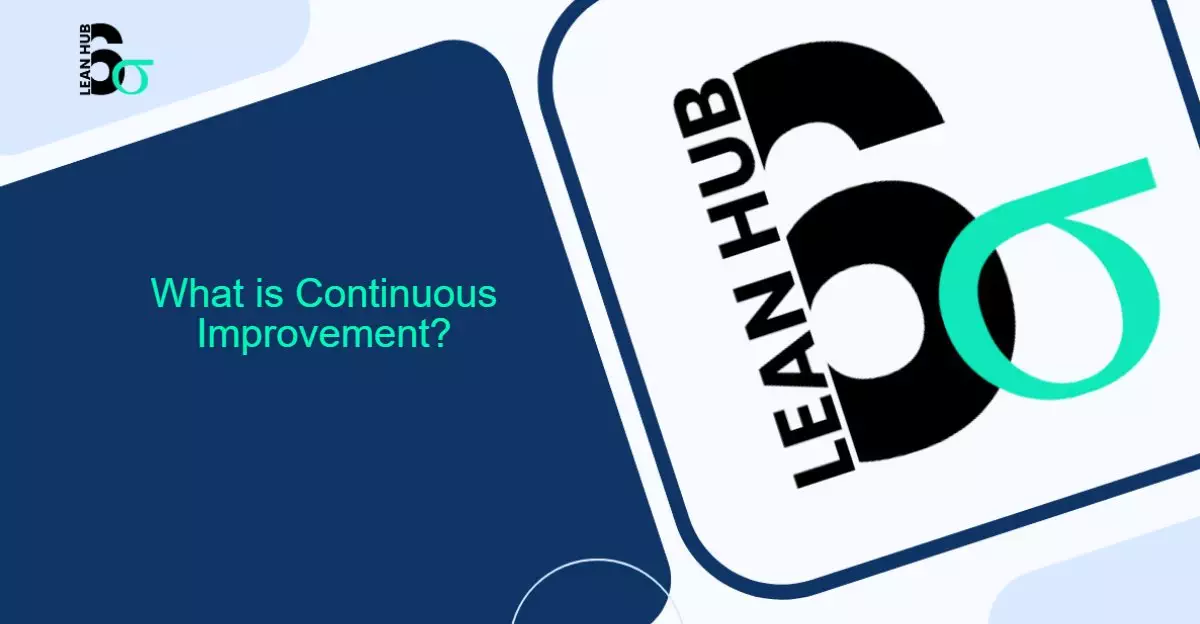A Lean Six Sigma Approach
Introduction: What is Continuous Improvement?
Continuous improvement is the ongoing effort to enhance products, services, and processes over time. It involves regularly identifying inefficiencies, solving problems at their root, and making small, incremental changes that add up to significant performance gains.
While many organizations claim to improve, few do it systematically. That’s where Lean Six Sigma excels—offering a structured, data-driven approach to continuous improvement that leads to sustainable, measurable results.
From global corporations to small businesses like a pizza delivery shop, continuous improvement powered by Lean Six Sigma can reduce errors, shorten cycle times, lower costs, and improve customer satisfaction.
Why Continuous Improvement Matters
In a rapidly changing world, standing still means falling behind. Businesses that consistently improve:
- Outperform their competitors
- Retain more customers
- Operate with greater efficiency
- Empower their employees
- Adapt quickly to market demands
Without a culture of continuous improvement, organizations risk stagnation, rising costs, and declining customer trust. Lean Six Sigma provides both the mindset and the toolkit to make improvement part of daily operations, not just occasional projects.
Continuous Improvement and Lean Six Sigma: A Perfect Fit
Lean Six Sigma is built on the foundation of continuous improvement. It provides a repeatable, data-driven framework (DMAIC) to identify problems, analyze causes, implement improvements, and sustain results.
Lean contributes by focusing on waste elimination, flow improvement, and customer value.
Six Sigma adds statistical rigor, helping teams reduce process variation, errors, and defects.
Together, Lean and Six Sigma create a culture where improvement is ongoing, intentional, and aligned with business goals.
Pizza Shop Example: Continuous Improvement in Action
Imagine Ben’s Pizza—a busy delivery shop. A few months ago, average delivery time was 50 minutes, with frequent order mistakes and cold pizzas. Instead of accepting this as “normal,” the team adopted a continuous improvement mindset.
Using Lean Six Sigma:
- They analyzed the order-to-delivery process using value stream mapping.
- Found delays between pizza prep and driver dispatch.
- Implemented a first-in, first-out dispatch rule and added heat lamps to keep pizzas warm.
- Used a control chart to monitor delivery time every week.
Instead of solving one issue and moving on, Ben’s team now reviews metrics weekly and runs monthly Kaizen events to make further improvements.
This is continuous improvement—small, frequent, data-backed changes that lead to long-term success.
Core Principles of Continuous Improvement
Whether applied through Lean Six Sigma or other methodologies, continuous improvement typically follows these core principles:
- Focus on the Customer
All improvements should enhance customer experience, reduce errors, or improve value delivery. - Make Incremental Changes
Small, low-cost improvements made regularly are more sustainable than massive overhauls. - Empower Employees
The best ideas often come from those who do the work every day. - Base Decisions on Data
Gut feelings are replaced with facts and analysis. - Sustain the Gains
Standardize new processes and use performance metrics to maintain improvements.
Kaizen: The Heart of Continuous Improvement
Kaizen is a Japanese term meaning “change for the better.” In Lean Six Sigma, Kaizen represents the philosophy and practice of making continuous, small improvements that involve everyone.
In the context of our pizza shop:
- A prep cook suggests reorganizing the toppings layout to reduce hand movement.
- A driver proposes grouping deliveries by zone to reduce travel time.
- The manager initiates daily stand-up meetings to quickly surface issues.
These aren’t big projects, but over time, they transform performance and culture.
The Role of DMAIC in Continuous Improvement
While Kaizen drives small day-to-day improvements, DMAIC provides a structured approach for solving more complex problems.
- Define – Identify what needs improvement and set clear goals.
- Measure – Understand current performance with real data.
- Analyze – Find root causes of delays or defects.
- Improve – Implement and test targeted solutions.
- Control – Monitor and standardize to prevent regression.
DMAIC ensures that continuous improvement is not just a concept, but a repeatable process for lasting change.
Tools That Support Continuous Improvement
Lean Six Sigma offers a robust toolkit to drive and support ongoing improvements:
- Process Mapping – Visualize steps to identify redundancies or gaps.
- 5S – Organize the workplace for efficiency.
- PDCA (Plan-Do-Check-Act) – A simple iterative improvement loop.
- Standard Work – Define best practices and ensure consistency.
- Root Cause Analysis (5 Whys, Fishbone Diagram) – Identify why problems happen.
- Control Charts – Track performance trends and detect variation.
- Voice of the Customer (VOC) – Ensure improvements reflect customer needs.
- Daily Management Boards – Visual tools to track performance at the frontline.
Benefits of Continuous Improvement (With Lean Six Sigma)
Implementing continuous improvement through Lean Six Sigma leads to:
- Higher Efficiency – Processes become faster and smoother.
- Lower Costs – Less waste, fewer errors, and optimized resource use.
- Improved Quality – Consistent delivery of products and services.
- Greater Agility – Quick adaptation to change or customer feedback.
- Engaged Workforce – Employees contribute ideas and feel ownership.
- Better Customer Experience – Faster response, fewer issues, more value.
How to Build a Culture of Continuous Improvement
Building a successful continuous improvement culture doesn’t happen by accident—it requires leadership, structure, and reinforcement.
- Start with Leadership Support – Leaders must model and support continuous improvement behavior.
- Train Your Teams – Give employees the tools and knowledge (Lean Six Sigma training).
- Make Improvement a Daily Habit – Encourage suggestions, run Kaizen events, and monitor small wins.
- Use Visual Management – Display goals, metrics, and progress.
- Celebrate Improvements – Recognize individuals and teams who contribute to better processes.
When continuous improvement becomes part of the culture, everyone becomes a problem-solver.
Final Thoughts: Continuous Improvement is a Competitive Advantage
Continuous improvement is more than a buzzword—it’s a powerful strategy for building a resilient, efficient, and high-performing organization.
Lean Six Sigma makes continuous improvement systematic, measurable, and scalable. Whether you’re leading a Fortune 500 company or managing a neighborhood pizza shop, the principles stay the same: always look for a better way, use data to guide decisions, and empower people to drive change.
Over time, those small improvements lead to massive impact.
Ready to bring continuous improvement to your organization?
Explore Lean Six Sigma certifications, Kaizen tools, and real-world templates at Lean 6 Sigma Hub and start building a culture of excellence today.








